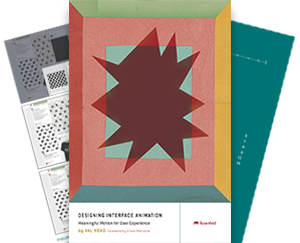
(photo: Small section of Jer Thorp’s piece in the data art show at Flashbelt.)
I went to Flashbelt last week with some big expectations. I’d heard so many good things about it, and pretty much everyone I talked to told me it was the best Flash conference out there. So, like I said, high expectations. The good news is, it definitely lived up to them.
I had an absolutely amazing time at Flashbelt. I caught up with some friends, met some amazing new people, and caught some amazing sessions in the three days I was there. Definitely worth the trip.
There’s been some controversy over one particular session fueled by a crazy twitter telephone game. That was just one session. There were nearly three whole days of other sessions at the conference, too and I’d rather talk about those instead.
One thing I noticed was that there was a lot of talk about open frameworks. It came up in at least three presentations that I caught. Why? Well, for one thing, it’s fairly new and it’s pretty darn powerful. But, I think the point everyone talking about open frameworks was trying to get across was to encourage us all to make something. And the easiest way to make something is if you can make it fast. It really doesn’t matter what you use as long as it allows you to get your ideas into something more tangible.
Session Highlights
I tried to put together a short list of highlights from the sessions I attended, but it ended up not being short at all but I’m posting it anyways. Just know that you were warned.
Work/Play, Seb Lee-Delisle
Seb put together a great session to start of the conference with. (Well, the first session I attended after the morning keynote…) He talked a little bit about particles, as well as some particles in real life called pyro(technics) for the people.
He also showed a few recent projects, both for work and for play. Including the Big & Small site. There was lots of audience participation, too. The whole room got to play a game controlled by moving glow sticks.
Streaming Stories – Tali Krakowsky
I wasn’t sure what to expect walking into this session because I didn’t know much about Tali or her work, but it was one of my favourites.
Her main question was why is it that we expect so much from our devices but not from our environment? She showed projects — both art and commercial — which featured non-typical interfaces, and in some the environment was the interface. I especially liked the fact that she showed projects beyond the physical computing types you might expect to be shown.
She also used examples of water designs done by Wet where she works to show how narrative can be built without words. Overall, a really great session.
Flash – beyond accessibility – Niqui
Flash gets a pretty bad rap when it comes to accessibility, that’s for sure. Niqui showed some practical examples and shared lots of code she uses to create accessible Flash sites. She even demoed an accessible Papervision-based site. (Big & Small again) How’s that for two things you wouldn’t have thought you’d hear mentioned together?
One particularly interesting point from this session is that both Flash and Flex based projects can check if assistive technology is running on the computer that is viewing the files. Interesting, indeed.
Epiphany – joel Gethin Lewis
Joel is a speaker you should definitely see if you ever get a chance. He talked about what his motivation for doing his work is as well as his philosophy of giving source code away. I was especially impressed with how well his presentation flowed. Great content and great delivery. Check out his site for more about his work.
Design + Technology – Todd Vanderlin
Todd has a job that I bet 90% of the flashbelt attendees were jealous of. His job is to build cool stuff… at an ad agency. If you’re wondering, he’s also the guy who did the AR record scratching that you’ve probably seen a video of.
He showed a few projects that he’s built that are being used by the agency. Most just for show in the lobby, and some done for actual client work like this interactive aquarium .
It’s always interesting to see what kind of non-typical screen projects make it out in to the real world as client work. I like that I’ve been seeing more and more examples of this, too.
Hacking the Newsroom – Jer Thorp
Jer is another one you need to see if you get the chance. He does data visualization in a different way than you’d normally expect to see data and he has a great sense of humor about it, too. He showed some of his recent work done with processing and NYTimes API as well as some of the process behind them.
He posted a detailed follow up along with some images of a couple of the projects he talked about on his blog.
